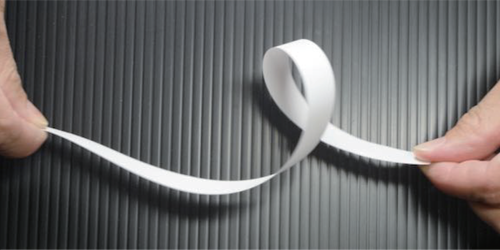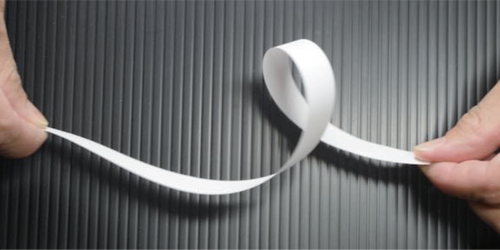Ribbon Creases and Twists
Loops appear in many mechanical systems, from shoelaces to DNA strands. Theories can predict what will happen when a loop is pulled tight, but these models only apply to one-dimensional systems, like wires. A new study tackles the problem in two-dimensional ribbons, finding that loop tightening leads to one of three outcomes: a crease, a pop-out, or a twist. The team explains the final shapes as a competition between bending and stretching forces.
In the case of a 1D wire with a loop in the middle, pulling on the ends will make the loop radius smaller. At some point, the bending strain becomes too much, and the wire starts to twist to release some of that strain. Pulling on the wire more causes the loop to unfurl into the shape of a loose coil.
For a 2D ribbon, the geometry makes twisting difficult, as the ribbon is often forced to stretch in order to make a twist. To investigate this behavior systematically, Yoshimi Tanaka from Yokohama National University, Japan, and colleagues performed experiments in which they placed a single loop in the middle of a paper ribbon and attached the two ends to motorized pullers. The researchers varied the length and width of the ribbon, as well as the transverse offset between the pullers. For small offsets, the loops collapsed to a crease, whereas for larger offsets, the loops unraveled in a sudden jump (pop-out) or through more continuous twisting. By modeling the forces in terms of ribbon parameters, the team showed how one could predict the outcome of a ribbon tightening, which might be useful in describing the behavior of DNA.
This research is published in Physical Review Letters.
–Michael Schirber
Michael Schirber is a Corresponding Editor for Physics based in Lyon, France.





